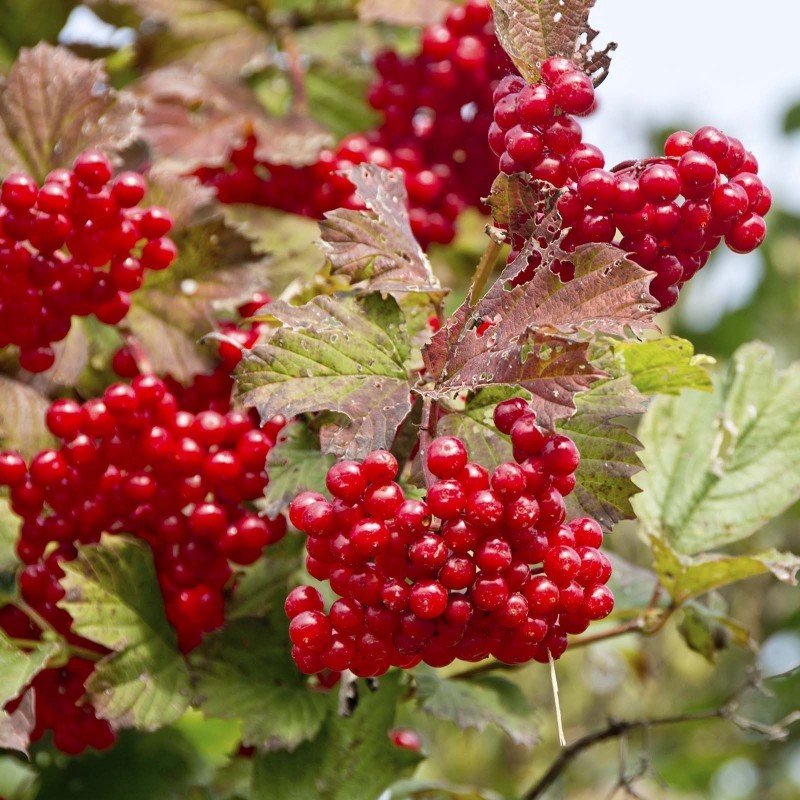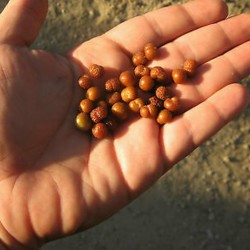

Prodotto con tempo ridotto di prezzo

Semi di ribes selvatico...
- -0,01 €







Viburnum trilobum é una specie originaria del Nordamerica settentrionale. Assume le dimensioni di un grande cespuglio e assomiglia notevolmente al nostro Viburnum opulus. Produce un’abbondante quantità di frutti che assumono
Viburnum trilobum é una specie originaria del Nordamerica settentrionale. Assume le dimensioni di un grande cespuglio e assomiglia notevolmente al nostro Viburnum opulus. Produce un’abbondante quantità di frutti che assumono la caratteristica colorazione rossa sin dalla fine del mese di luglio e rimangono sulla pianta fino all’inizio della primavera, allorché vengono finalmente apprezzati anche dagli uccelli selvatici. Il fogliame assume una vistosa colorazione autunnale.
Hardy, Adaptable, Easy to Grow, Showy Flowers, Fall Color, Showy Edible Fruits, Attracts Birds and Butterflies, Wildlife Food/Shelter, Hedge/Shrub Border, Bonsai, Cold, Heat, Drought and Wind Tolerant
The American Highbush Cranberry is native to swampy woods, bogs, lake margins, pastures, thickets, slopes and moist low places from New Brunswick to British Columbia south to New York, the Great Lakes, South Dakota and Oregon. It is a deciduous shrub with a rounded, upright spreading and sometimes arching habit. It typically grows to 10 to 15 feet tall. The leaves are three lobed, maple-like, shiny dark green turning an attractive yellow red or reddish purple in the fall. In spring it features an outer ring of 3/4 inch white sterile flowers surrounding the fertile but inconspicuous inner flowers, in a 3 inch flat-topped cluster. The flowers are followed by drooping clusters of cranberry like bright red 1/4 inch edible berries (drupes) in the fall.The berries are edible fresh off the shrub and are much less bitter than those berries found on Viburnum opulus. The berries are sometimes used to make jams and jellies.
American Highbush Cranberry is not related to true cranberries; the name comes from its tart, edible red fruits.
Zone: 3 to 8
Growth Rate: Medium
Plant Type: Deciduous Fruiting Shrub
Family: Adoxaceae
Native Range: Northern North America
Height: 8 to 15 feet
Spread: 10 to 15 feet
Shape: Rounded with upright-spreading to irregular and arching branching.
Bloom Time: April - May
Bloom Color: White
Flower/Fruit: Small white flowers held in flat clusters followed by bright red 1/4 inch edible berries.
Sun: Full sun to part shade
Fall Color: Yellow red or reddish purple
Drought Tolerance: Moderate to High
Water: Medium to wet
Maintenance: Low
Site Requirements/ Soil Tolerances: Easily grown in average, medium moisture, well-drained soil in full sun to part shade. Prefers loams with consistent moisture, but tolerates a wide range of soils. Sometimes grows in wet or boggy soils in its native habitat.
Culture: Very tough and easy to grow. Occasional pruning to remove oldest stems may be helpful.
Uses: Shrub borders or foundations. Woodland margins. Hedge or screen.
Sowing Viburnum trilobum Seeds:
American Highbush Cranberry seed need a warm spell then a cold spell in order to mature the embryo and reduce the seed coat.
Scarification, Warm then Cold Stratification and moisture enhance germination.
Scarify: Soak 24 hours
Stratify: Warm 90 Days, then Cold 60 days, 40 Degrees F in a Moist Medium.
Scheda tecnica

 Recensioni (0)
Recensioni (0)